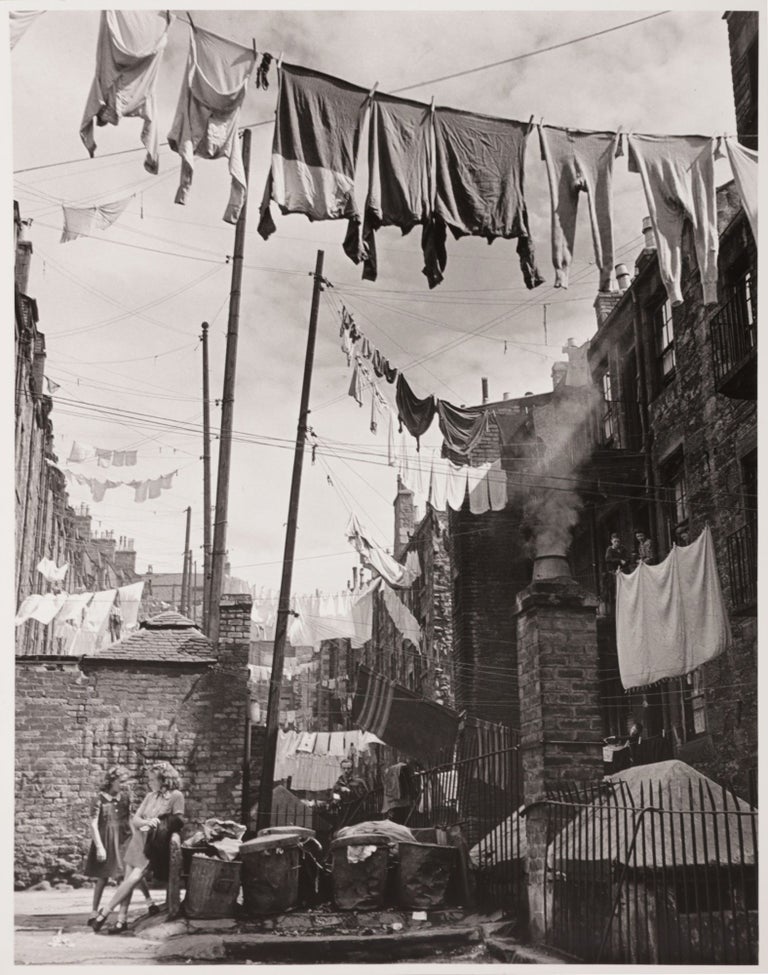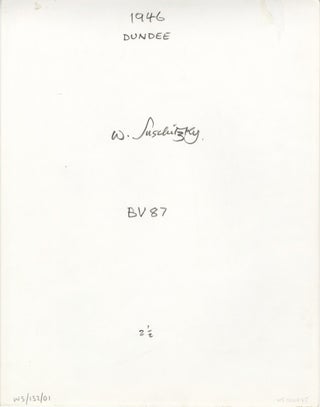Washing Strung Between the Tenements, Dundee, Scotland, 1946
1946. Silver gelatin print, printed 1980s; image dimension 15 x 11 5/8 in. (380 x 293 mm), sheet dimension, 15 3/8 x 12 1/8 in. (390 x 309 mm). The verso signed "W. Suschitzky" in black crayon, titled and dated Dundee. 1946".
[Michael Omasta, et al. Wolf Suschitzky: Seven Decades of Photography (Vienna: Synema, 2014), ill. p. 188].
A photograph that attests to Suschitzky's keen interest in the social environments of the working class. His worked as a cinematographer brought him to Britain’s coal mining communities, to the steel mills and the workers' housing. "In Dundee I came across the worst slums I had ever seen. When I took this picture I was next to a ten story high tenement building. There was only one toilet on each floor and one cold water tap. I got there working on a film about delinquent children and how they were treated in Scotland." (Verso, pp. 188–189)
Born in Vienna in 1912 Wolfgang Suschitzky was not only an established documentary photographer but also a cinematographer who worked on over 200 feature films, TV productions, and documentaries. His father was a social democrat of Jewish origin, who opened the first social democratic bookshop in Vienna (later to become a publisher), and Suschitzky was born in the apartment above the bookshop. His photographer sister Edith Tudor-Hart (1908-1973) convinced him to set aside his passion for zoology and study photography, which would make him a better living and in 1934 he left for London, where she lived.
Before the Second World War, he began working for the distinguished documentarist Paul Rotha: "I showed him some things, and he gave me a job on some zoo films. That suited me, because when I was growing up in Vienna, I always wanted to be a zoologist." He was a probably best known for his work with Paul Rotha and for his work in the film "Get Carter". He also worked on propaganda films such as Report on Steel (1948) which promoted the steel industry: "They wanted to make films that were useful to society, and so I was really glad that I could join them. We made films on housing problems, on problems in hospitals and down coal mines, so I got into places other people normally never go."
Suschitzky's work is socially engaged and always shows integrity and compassion for his subjects. His work is in the collections of Tate Britain, National Portrait Gallery, Victoria & Albert Museum, Museum of London, National Galleries of Scotland, Austrian Cultural Forum, and other institutions worldwide. In 2012 BAFTA presented Suschitzky with a Special Award for a Creative Contribution to Cinema. He was the father of cinematographer Peter Suschitzky and classical musician and writer, Misha Donat.
Item number: 478
Price: $4,800.00
Share:

